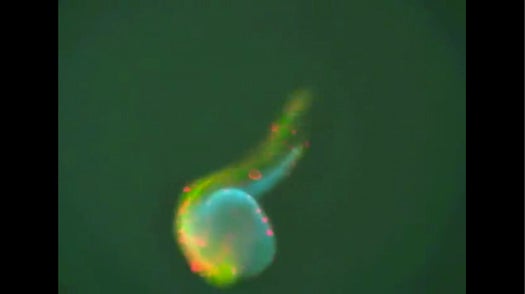An Injection of Symbiotic Cyanobacteria Gives Fish the Power of Photosynthesis (Sort Of)
There are plenty of ways to cut down on your food intake — you can observe the methods of fasting...

There are plenty of ways to cut down on your food intake — you can observe the methods of fasting holy men, or perhaps toss back an appetite-suppressing hydrogel capsule — but at last week’s synthetic biology conference in Boston, one Harvard biologist presented a particularly novel idea: photosynthesis. It’s not just for plants anymore.
Harvard Medical School biologist Pamela Silver presented an interesting bit of research in which she injected fluorescently labeled cyanobacteria — those microbes responsible for nearly 50 percent of Earth’s photosynthesis and life as we know it — into zebrafish embryos.
Zebrafish are clear, making them good test candidates for this kind of research. And what the researchers observed was quite interesting: absolutely nothing. The fish tolerated the cyanobacteria very well, and both the fish and the bacteria thrived and grew — you can see the cyanobacteria living inside the embryos in the whimsically scored video here.
The cyanobacteria alone did not generate enough energy to sustain the embryos, but the fact that both fish and bacteria survived symbiotically is pretty amazing, and the team is working on methods to increase the cyanobacteria production.
Does that mean we’ll soon be engineering photosynthetic animals, or even humans? It’s none too likely anytime soon, as nice as sunning for your daily bread might sound. But whenever modern science tangles with the stuff of sci-fi, it’s always fun to ponder the possibilities.